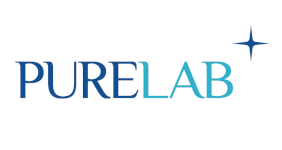healthmanagement.org
2 January 2017
Introduction
There have been various predictions about the future of laboratory medicine and its subspecialties, both general and specific. The article “Future of Laboratory Medicine” by Larry J. Kricka, Tracey G. Polsky, Jason Y. Park and Paolo For tina presents an overview of previous predictions that have already become a reality and some future predictions that are expected to play a critical role in this specialty.
Back in 1969, Tom Whitehead, the first Chair of Clinical Chemistry at the University of Birmingham identified five eras of clinical chemistry in his lecture “A view from a bridge”. These include:
- the complicated era from 1920 to 1940;
- the simplified era from 1940 to the early 1950s;
- the crisis era in the late 1950s;
- the sophisticated era in the late 1960s; and
- the profile era in the 1970s.
For the future, each of these predictions has merit, and many have already become a reality. More recently pharmacogenetics has been revolving around the slogan “right patient, right drug, right time” and the future of laboratory medicine is characterised by buzzwords like nanotechnology, biosensors, genomics, proteomics and microchips.
Laboratory Organisation and Staffing
Futurists predict a world that will be dominated by large supra-regional ter tiary centres or laboratory networks that will be formed as a result of laboratory consolidation. The number of laboratories will reduce, driven by outsourcing of laboratory services, competition between laboratories for hospital work and the commoditisation of laboratory tests. Greater emphasis will be placed on refocusing laboratory services toward specific population segments such as the elderly. Haematology, transfusion medicine, biochemistry and immunology will be unified as “blood sciences.”
Laboratory staff will be expected to deal with demand management, and will be responsible for providing additional consultative services related to laboratory testing. The future role of laboratories will be more geared toward quality control, reducing laboratory errors, eliminating unnecessary testing and focusing on the challenges of global harmonisation. Two simultaneous trends seem to be emerging in this field. One is the consolidation of traditional laboratory testing and second is the expanding new market for near-patient testing.
Cost-containment and cost-effective operation of laboratories will be an important issue for laboratories in the future. Already there is a trend to unify independent hospitals into health systems and to consolidate specialty laboratories into a core laboratory model as evident by the establishment of the Calgary Laboratory Services (CLS) in Alberta, Canada. “Blood science” laboratories are also being developed, for example the Blood Science Laboratory at the University Hospital Birmingham NHS Foundation Trust in the UK.
Laboratory staffing shortages will continue to be a source of concern. Measures that could be used to deal with
such shortages may include reducing staffing needs through consolidation and automation. While these strategies seem feasible, consolidation of services such as radiology and pathology still seems a remote possibility. Experts propose the possibility of outsourcing clinical laboratory services to countries with equally sophisticated services but lower costs. There are quality programs in place such as the ISO (The International Standards Organization), CAP (College of American Pathologists) accreditation and CLIA (Clinical Laboratory Improvement Amendments) certification to ensure global standards are met.
There has also been an increased migration of testing to the point-of-care, and in future this could result in reducing the reliance on hospital laboratories as well as help in reducing test volumes in hospital and regional laboratories. Home tests can also play a role in decreasing test volumes in laboratories. Patients today are much more informed due to the availability of disease and diagnosis information. Resources such as Lab Tests Online now provide extensive information to patients about specific laboratory tests. It is believed that better-informed patients will eventually drive down the cost of laboratory testing.
Automation and Robotics
This is one of the most popular predictions. The use of transport models to deliver specimens and the use of humanoid technology seems to be a fascinating concept in laboratory medicine, but has yet to become a reality. For now the capabilities of humanoid robots remain limited, and the process of automation and robotics has been quite slow in laboratory specific areas such as microbiology, molecular pathology and anatomic pathology. Automation has developed, but through the use of software that allows more effective communication between analysers, information systems and electronic medical records.
It is believed that the demand for automation and robotics will continue to rise, because of the need to have more cost efficient laboratories. The aging population and an already existing shortage in this field also highlight the need for alternate solutions. Thus, while robotics may still have a long way to go, it is not entirely unreasonable to hope that in future, machines may play an important role in laboratories.
Point-of-Care Testing
Many experts strongly believe that the future of laboratory medicine will be inclined towards more testing at point-of-care (or near to the patient). It would also involve the integration of point-of-care testing into patient management strategies and pathways of care and more testing at home. Point-of-care testing offers several benefits, including low cost, portability, simplicity, flexibility and built-in quality control. Predictions suggest that point to hand-held devices could be used for monitoring the top eight infectious pathogens.
The introduction of wearable devices is already a step in this direction. Phones can be used to perform analyses at point-of-care using plug-in modules. Although smartphones are still not being used as extensively as initially predicted, there are still many uses for them, including taking pictures of slides and tissues, performing colorimetric tests, providing onboard data analysis and so on. Mobile technology should play an important role in laboratory medicine in future, especially in low resource and remote regions.
Telepathology
Telepathology is already in use in some clinical laboratories, and its use for manual interpretation of differential blood counts is now routine. However, telepathology is not used routinely in surgical pathology, and digital slide scanning systems for primary diagnosis of surgical pathology have not gained approval
in the U.S. It is predicted that smartphones, tablets and other mobile devices can become the hub of medicine in future and telehealth will be an important component as more telehealth applications develop.
The FDA has created the path for the implementation of digital pathology and medical software by providing regulatory guidance, and thus it is safe to say that imaging systems will facilitate slide interpretations in future
and will also incorporate surgical pathology testing and interpretation.
Genomics
Genomics is expected to be very visible in future for both pharmaceutical companies and private laboratory services. There will be widespread use of DNA probes, neonatal genetic screening, viral load monitoring, high-density SNP diagnostic assays, electrochemical detection of infectious agents, gene mutation
analysis, and gene and protein profiling. New diagnostic tests are also expected to be developed with the completion of the human genome project.
Expression profiling has had limited success to date, and is not expected to replace histologic diagnosis and traditional cancer classification systems, but it is considered an ancillary test. DNA testing should become readily available in the future, and large clinical studies such as the UK 100,000 genome project and the Beijing Institute for Genomics (BGI) Million genome project are anticipated to provide greater insight into the link between DNA sequence and disease.
Proteomics
Proteomics is believed to be the basis for future diagnostic tests. It is expected that analytical systems will be developed that will be capable of testing hundreds and thousands of different proteins. There are between 250,000 and 1,000,000 proteins in human cells. Many of these remain unstudied but in future, they could form the basis of a new diagnostic test.
Conclusion
Most of the predictions about laboratory medicine are optimistic, and are geared towards the development of more effective treatments, eradication of disease and longer lives. Telemedicine is predicted to play an important role for the period 2032-2062. It is important to remember though that making predictions is not an exact science and there are many previous predictions that have not materialised yet. However, an examination of the future helps in the planning process, and enables management teams to develop skills and acquire resources that could potentially lead them to making these predictions a reality.
Key Points
Predictions about the future of laboratory medicine continue to be a source of interest for healthcare professionals.
Two simultaneous trends seem to be emerging in this field. One is the consolidation of traditional laboratory testing and second is the expanding new market for near-patient testing.
It is believed that in future better-informed patients will eventually drive down the cost of laboratory testing.
Major genome projects are anticipated to provide greater insight into the link between DNA sequence and disease.
Most of the predictions are optimistic and are geared towards the development of more effective treatments, eradication of disease and longer lives.
Source: health management via https://iii.hm/7km
---------------------------------------
For further laboratory breakthroughs please make sure to attend the 16th Annual Laboratory Management and Medicine Congress (MEDLAB). Featuring 11 CME-accredited multi-disciplinary conference tracks, including laboratory management, molecular diagnostics and microbiology & immunology, alongside 5 new tracks specialising in updates in clinical diagnostics of cardiology and diabetes.

























































